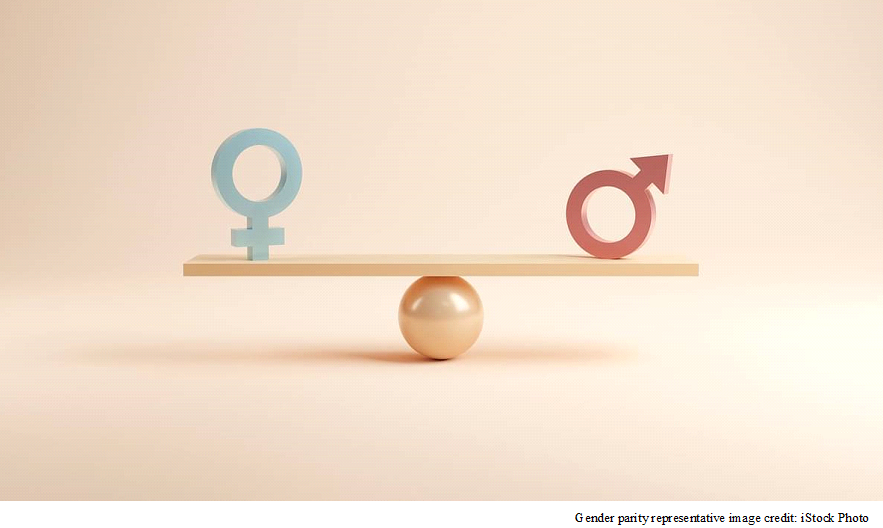Persisting gender gap in STEM jobs
09 Mar 2024
Opinion: Jyoti Thakur.
Is attaining gender parity in STEM education sufficient?
In the recent budget speech, the finance minister proudly declared that India now stands among the leading nations worldwide in terms of women’s enrolment in STEM (Science, Technology, Engineering, and Mathematics) education. This significant milestone is a clear testament to the concerted efforts of the Government of India, which has been actively promoting female education in the STEM fields through targeted schemes and programmes such as Vigyan Jyoti, GATI, CURIE, and the IIT supernumerary scheme, etc., aimed at increasing the intake of female students. While these statistics offer hope and progress, a deeper dive into the data reveals an underlying challenge that mars the success story: a significant portion of these graduates fail to transition into STEM-related employment. This raises the question: Is attaining gender parity in STEM education sufficient?
The story of Indian higher education is indeed a delicate dance between modern aspirations and traditional values. Over the last decade, India has made substantial progress in enhancing women’s enrolment in STEM education, from 37% in 2010–11 to an impressive 43% in 2021–22. It’s encouraging to see that women in India have effectively shattered the so-called ‘bro code’ in mathematics classrooms, a realm previously viewed as a male stronghold.
Remarkably, in the 2021–22 academic year, women made up 58% of the total student population in mathematics. While these achievements deserve applause, there is a need to go beyond headline items, as the devil lies in the details. The increase in STEM enrolment is driven by increased enrolment in science courses, while enrolments in more promising engineering and technology streams remain depressingly low at 29.2%. Although the overall increase in enrolment is a big step forward, it doesn’t mean much until academic success leads to job opportunities.
Education is considered a catalyst to increase women’s access to employment and agency. However, despite the increasing number of female graduates, India continues to grapple with the “leaky pipeline” predicament, due to which the transition from education to employment in the STEM fields remains fraught with obstacles. There is a massive gender gap of 81% in research and development, and women only make up 27% of the STEM workforce in India as of 2023. Furthermore, only 19% of scientists in the country are women.
Gender prejudice, whether subtle or explicit, persists in recruitment, advancements, and assessments within STEM professions in India. Moreover, women frequently confront stereotypes challenging their competence in science and technology, which diminishes their prospects for progression and involvement in significant projects. According to LinkedIn data, despite their prevalence in STEM education achievements, women are primarily placed in entry-level positions at 29%, a figure that dwindles to a mere 14% at leadership tiers.
The Prime Minister has launched an ambitious initiative for a ‘Viksit Bharat,’ aiming to transform India into a developed nation by 2047, with a focus on four key pillars: youth, the poor, women, and farmers. However, the stark contrast between the high enrolment in STEM education and their low participation in STEM careers highlights a critical issue, famously termed by Professor Sonalde Desai as the “creation of educated housewives.” This situation reveals a concerning paradox where women, despite their higher education and professional skill sets, are either pushed into or voluntarily adopt domestic roles instead of joining the workforce. This discrepancy has significant implications, affecting the women involved and the wider economic and social fabric.
Economically, it denotes a loss of investment in human capital, with untapped skills and knowledge that could otherwise spur innovation, productivity, and growth, thereby constraining national development. Socially, it perpetuates gender stereotypes, impedes gender equality progress, and sends a backward message about women’s societal roles, diminishing the perceived value of their educational and professional achievements. It also deprives young girls of career-oriented role models, further entrenching gendered societal expectations.
The rising number of women graduating in science signals progress towards achieving gender parity in STEM education, marking a positive advancement. However, this milestone merely marks the initial phase. To fully leverage the potential of this highly educated workforce, concerted actions are essential to dismantle barriers hindering women from entering and sustaining careers in STEM fields.
Addressing this challenge calls for systemic changes across education, home, and work environments. Strategies must include fighting against workplace discrimination and harassment, ensuring equal pay and career advancement opportunities, and supporting work-life balance through flexible work arrangements and parental leave policies, alongside initiatives aimed at reducing the burden of domestic responsibilities. The true empowerment of women in India hinges on bridging the gap between academic achievement and professional engagement in STEM fields ensuring women’s active and sustained participation in these sectors.
Jyoti Thakur is an associate fellow at the National Council of Applied Economic Research, Delhi, Views are personal.
Published in: Deccan Herald, 09 Mar 2024






